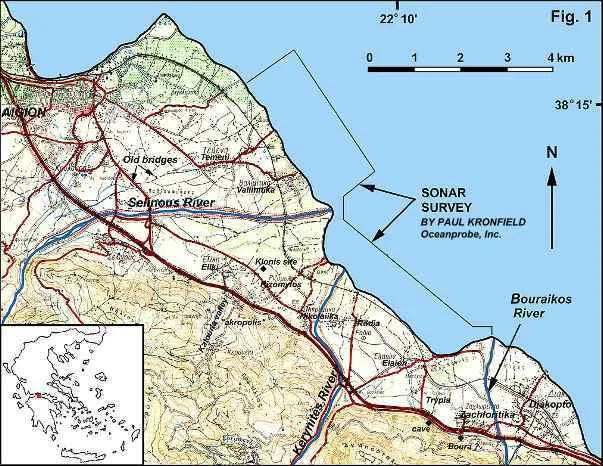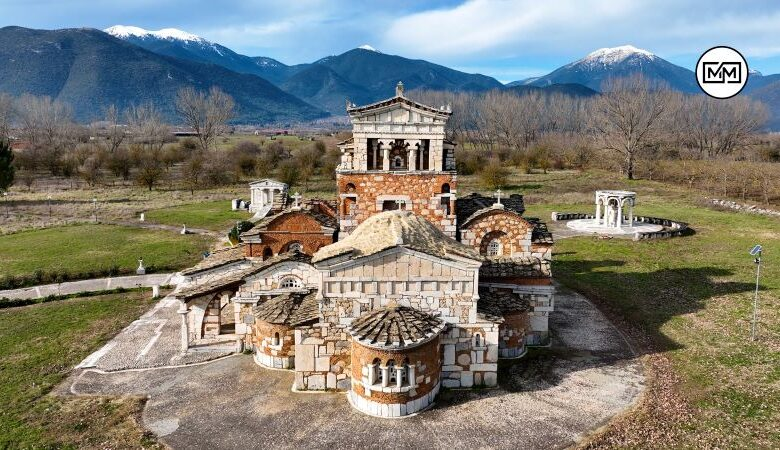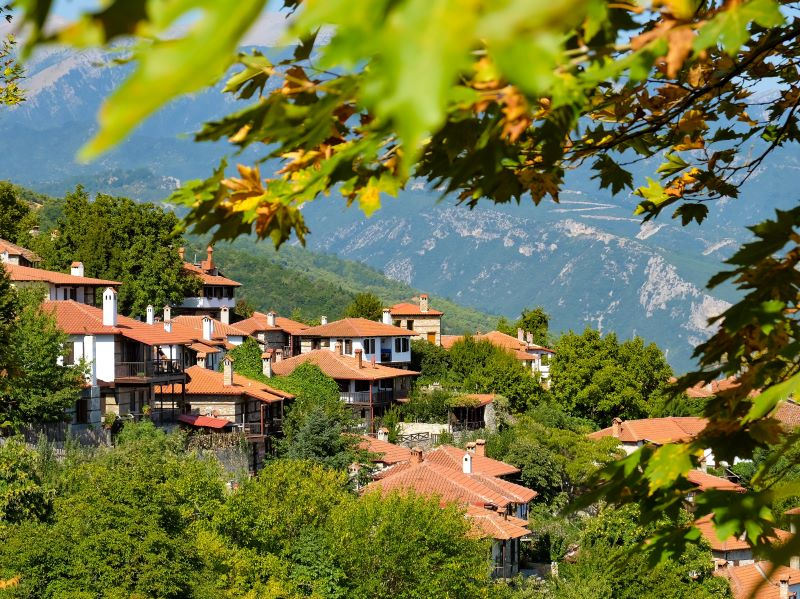On a winter night in 373 BC, a catastrophic earthquake and tsunami destroyed and submerged Helike, the principal Greek city on the southwest shore of the Gulf of Corinth. Helike had been founded in the Bronze Age and its pan-Hellenic sanctuary of Helikonian Poseidon was known through the Classical world (Katsonopoulou 1999, 2002). Helike led the twelve cities of the first Achaean League, and founded colonies, including Priene in Asia Minor and Sybaris in South Italy. The dramatic destruction of Helike was widely discussed by many Greek and Roman authors (Appendix A) and may have inspired Plato, then in his prime, to contrive the myth of Atlantis (Appendix B).
About 150 years after the disaster, Eratosthenes visited the site and reported that a standing bronze statue of Poseidon was submerged in a poros, where it posed a hazard to those who fished with nets. The term poros was generally translated as “strait”, but Katsonopoulou (1995) interpreted it as referring to an inland lagoon.
Around 174 AD, the traveler Pausanias visited a coastal site still called Helike, located 7 km southeast of Aigion (Fig. 1), and reported that the walls of the ancient city were still visible under water. Later all traces of Helike were lost. In 1861, German archaeologists visiting the area acquired a bronze coin of Helike, showing the head of Poseidon in fine Classical style (Fig. 2), perhaps modeled on the cult statue of the god at Helike.
Fig. 1. The Helike search area, on the southwest shore of the Gulf of Corinth, northern Peloponnesos, including the area of the 1988 sonar survey. In 2000 and 2001 we located ancient Helike on the coastal plain between the Selinous and Kerynites Rivers.
Fig. 2 .Bronze coin of Classical Helike: obverse shows the head of Poseidon and inscription ELIK, reverse shows a trident flanked by dolphins. (Staatliche Museen zu Berlin)
The ancient accounts give the impression that the submerged ruins of Helike were removed from subsequent human interference, and were never salvaged, quarried or looted. Archaeologists thus hoped that the site might provide a kind of “time capsule” from the Classical Era, resembling a shipwreck the size of a city. Prof. Spyridon Marinatos, late Director General of Antiquities and discoverer of the prehistoric town on Santorini, pursued the search for Helike over many years. He estimated (1960) that the site contains dozens of original bronze and marble works of the Classical sculptors. Marinatos (1964) looked forward to “the discovery of a whole ancient town far more precious and interesting than Pompeii” and said it would be “almost surely the most spectacular archaeological discovery ever made.”
In 1988, we launched The Helike Project, to locate the site of the lost city. As a first step, we engaged Paul Kronfield to carry out a systematic sidescan and subbottom sonar survey of the seafloor southeast of Aigion (Fig. 1). The sonar images showed striking seismic disturbances (Soter 1999) but no evidence of a city on or below the seafloor. Accordingly, we shifted the search to the adjacent coastal plain. After the earthquake drowned Helike, the submerged delta became dry land again, due to the deposition of river sediments and local tectonic uplift (cf. Soter 1998).
Since 1991 we have drilled 99 bore holes on the coastal plain, within a survey area of 10 square kilometers. We found many ancient ceramic fragments in sediment cores from bore holes drilled in the upper part of the delta between the rivers Selinous and Kerynites (Fig. 3). The fragments were often found in layers, at depths ranging from near the surface down to 15 m. We dated some of these occupation horizons, which span the range from Byzantine, Roman, Hellenistic, Classical, Bronze Age and Neolithic times (Soter & Katsonopoulou 1999).
Fig. 3. Topographic map of the central search area, showing trial trenches, the Roman road, and bore hole locations.
In 1994 in collaboration with the University of Patras, we carried out a magnetometer survey in the midplain of the delta, which revealed the outlines of a buried building. In 1995 we excavated this target (now known as the Klonis site, at KL in Fig. 3) and brought to light a large Roman building with standing walls 2 m high (Fig. 4). The upper floors and walls had collapsed during an earthquake in the late 5th century AD. In addition to many Roman artifacts (pottery, coins, glass, fragments of marble decoration), the deepest strata of the excavation yielded Classical, Protogeometric and Mycenaean pottery fragments (Katsonopoulou 1998). Older occupation horizons evidently lay below the Roman one in this area.
Fig. 4. Klonis excavation site: Midway through the excavation, with tops of Roman walls revealed.
Since 2000, we have excavated in the Helike delta each summer. Below is a brief summary of the principal discoveries in sequential order.
2000. Based on evidence from bore holes and ground penetrating radar, we opened trial trenches which brought to light a Byzantine building and cemetery, a massive Hellenistic wall, a paved road (all near RM in Fig. 3), part of a Roman cemetery (at KR) of the 2nd century AD with tile-covered tombs, and a debris deposit full of late Classical/Early Hellenistic potsherds, roof tiles and a bronze coin of Sikyon. We also uncovered (in trench H7 at ST) foundations of walls of pre-Classical age buried in marine and lagoonal mud.
2001. We uncovered ruins of buildings destroyed by the earthquake of 373 BC (at BL). In two trenches (H21/H22 at ST) we brought to light more pre-Classical walls, this time together with complete pottery vessels, which unambiguously dated the site to the Early Bronze Age (EBA). We discovered a rare drinking cup, known as a depas amphikypellon, in one of the Early Helladic buildings in trench H22 at ST. An extensive Roman industrial site was excavated at H14. In five trenches we found that the road uncovered in 2000 is of Roman age and extends at least 800 m across the plain (red line in Fig. 3).
2002. We excavated a late Classical/Early Hellenistic cemetery with well-built tile-covered graves (H25). In one of the graves, a bronze ring was found. We also excavated a Hellenistic hearth (H30). Another trench (near ST) revealed more EBA walls. Abundant pottery of the Late Classical/Early Hellenistic period came to light in H28 at PF.
2003. Excavation of two trenches at RM brought to light part of a Hellenistic complex of basins with pebble floors and plastered walls. Associated finds included pottery, clay loom weights and a dozen bronze coins, mostly of Sikyon, dating from the third/second centuries BC. Excavation of a new trench in the Early Bronze Age site (H38 at ST) brought to light part of a large corridor house and showed that much of the prehistoric settlement is perfectly undisturbed and intact, containing abundant pottery in a variety of shapes and sizes, some preserving traces of their organic contents, including seeds. Other finds included bone tools, spindle whorls, seashells and animal bones. We also ran a geophysical test of the seismic reflection method in the EBA site. The data produced an image of probable buried structures having the same depth and orientation as the walls uncovered in adjacent trenches.
2004. Continued excavation at the EBA site in Rizomylos revealed additional Early Helladic buildings flanking the sides of a cobbled street (H43 at ST). The recovered pottery was rich and included a variety of vessels both in open and closed shapes. Decorated pottery includes pattern-painted Dark-on-Light vases and a large number of pithoi with finger-impressed, rope and overlapping disk bands decoration. We also discovered pointed bone tools, clay spools, and spherical stone tools (rubbers or polishers). Excavation of new trenches at RM revealed two deep basins with pebble floors connected by means of channels with the the shallow basins discovered in the previous year, together with an adjacent workshop area including several structures and a clay kiln (Fig. 6). Recovered pottery was rich, and the finds included thirteen bronze coins and numerous metal objects. In the same area, we discovered more large Hellenistic buildings (H44) and a new segment of the Roman road.
Fig 6. Hellenistic basins and workshop during excavation in 2004
2005. Extensive excavation around the group of the Hellenistic cisterns and basins discovered in previous years revealed a complex of rooms representing habitation, storage and workshop areas, including several stone structures, another clay kiln, and a third pebble-floored basin. We found a large array of Early-to-Middle Hellenistic pottery including black glazed, red glazed, West Slope and relief-decorated vases, together with clay lamps, loom weights, bronze pins and needles, other metal objects in iron and lead, 23 bronze coins mainly of Sicyon and the Achaean League, and a terracotta Tanagra lady. The discovery of lime deposited by the cisterns and basins, together with brightly colored soil and objects associated with fabric and garment manufacturing, suggests that the complex is probably a Hellenistic dyeing and weaving industrial site. In trench H51at the ST site, we excavated more EBA buildings along two intersecting cobbled streets. In addition to complete vases of various shapes and large pithoi jars, we found numerous pottery fragments, including solid and pattern-painted Dark-on-Light decoration with intersecting linear, zigzag, cross-hatched and paneled patterns. Many pithos fragments are decorated with finger-impressed, rope and overlapping disk bands. We also found obsidian and flint tools, an exquisite flint arrow head, an idol of porous gray volcanic stone, and numerous animal bones and seashells.
ROMAN. The straight Roman road runs from NW to SE across the Helike plain, with an average width of 5-6 m. One trench shows wheel ruts. We excavated the road in seven trenches and detected it using electrical tomography imaging over a distance of 1300 m in the area between Eliki and Rizomylos. This was the main coastal road in Roman times, almost certainly the leoforos which Pausanias used in the 2nd century AD when he visited the area and reported (Appendix A) that the submerged walls of Classical Helike were still visible. We uncovered a large Roman building at the Klonis site (at KL in Fig. 3), and a group of Roman tile covered graves at KR in Nikoleika. We also excavated a Roman industrial site in three trenches at PR.
HELLENISTIC. We discovered a large Hellenistic industrial complex including three cisterns and two deep basins with pebble floors and plastered walls, habitation, storage and workshop areas, including well preserved stone and plastered structures and clay kilns. Excavation data suggest that the site belongs to a dyeing and weaving industrial complex of the Early-Middle Hellenistic period. Nearby we discovered architectural remains of substantial buildings dated from the Late Classical/Early Hellenistic period, probably belonging to a settlement. To the southwest of the Hellenistic remains, we excavated part of a cemetery of the Late Classical/Early Hellenistic period with well built tile-covered graves. We also excavated a Hellenistic hearth.
CLASSICAL. Excavation of trenches in the mid-plain of Rizomylos (at BL in Fig. 3) brought to light significant architectural remains of Classical buildings at 3 m depth, buried under thick lagoonal deposits and destroyed by an earthquake. Numerous finds show that the buildings were rich. The assemblage includes an array of Classical potsherds, both fine and coarse ware, dated to the first quarter of the 4th century BC. We recovered terracotta figurines and a silver coin from Sikyon in mint condition. It bears a fine representation of Apollo wearing a laurel wreath, and the reverse shows a flying dove.
Analysis of microfauna in sediment samples suggests that a shallow inland lagoon covered the ruins of these Classical buildings. This was evidently the poros mentioned by Eratosthenes, as suggested by the interpretation of Katsonopoulou (1995). Thus the city did not sink into the depths of the Corinthian Gulf, as previously believed, but was submerged by an inland lagoon, which later silted over.
EARLY BRONZE AGE. A most significant and unexpected discovery was that of an extensive and remarkably well-preserved Early Helladic coastal settlement (EHII-IIIA, ca. 2600-2300 BC), the first ever found in Achaea. The site is in the Rizomylos area (at ST in Fig. 3), about 1 kilometer from the present shore, at a depth of 3 to 5 meters below the surface. We uncovered the foundations of a corridor house and other rectilinear buildings flanking the sides of cobbled streets, together with abundant pottery.
The assemblage of vases includes open shapes (two-handled bowls, pedestal-footed and other cups, tankards and cooking pots) and closed shapes (narrow-necked jars and pithos jars). Of outstanding significance is a Depas amphikypellon cup of Trojan type, the first one known from the northern Peloponnesos. The presence of luxury items, including small gold and silver ornaments, attests to the wealth of prehistoric Helike.
The sediments covering the Early Bronze Age horizon contain marine and lagoonal microfauna, showing that the ruins were submerged in seawater for some time. A long wall of one building is abruptly offset by what appears to be a seismic discontinuity (Fig. 5). This suggests that the EHII-IIIA settlement may have been destroyed and submerged by an earthquake, as happened to its Classical successor some two thousand years later.
Fig 5. Early Bronze Age walls of prehistoric Helike, in trench H22. (Helike Project)
Source: http://www.helike.org/
Authors:
Dora Katsonopoulou - Ancient Helike Society, Athens eliki@otenet.gr
Steven Soter - American Museum of Natural History, New York soter@amnh.org
REFERENCES (printed)
Katsonopoulou, D. (1995). Helike [in Greek]. Archaiologia 54, 40-45.
Katsonopoulou, D. (1998) The first excavation at Helike: Klonis Field [in Greek, with extended English abstract]. Ancient Helike and Aigialeia: Proceedings of the Second International Conference (D. Katsonopoulou, S. Soter & D. Schilardi, eds.), Athens, pp. 125-145.
Katsonopoulou, D. (1999). Mycenaean Helike. In Meletemata: Studies in Aegean Archaeology presented to M. Wiener, Aegaeum 20, 409-413.
Katsonopoulou, D. (2002). Helike and her territory in the light of new discoveries. In Gli Achei e l’identita etnica degli Achei d’occidente (E. Greco, ed.),Tekmeria 3, 205-216. Paestum.
Marinatos, S. (1960). Helice: a submerged town of Classical Greece. Archaeology 13, 186-193.
Marinatos, S. (1964). Archaeology and modern technique. Fulbright Review 1, 41-44.
Soter, S. (1998). Holocene uplift and subsidence of the Helike Delta, Gulf of Corinth, Greece. Coastal Tectonics (Iain Stewart & Claudio Vita-Finzi, eds.), Geological Society, London, Special Publications 146, 41-56.
Soter, S. (1999). Macroscopic seismic precursors and submarine pockmarks in the Corinth-Patras Rift, Greece. Tectonophysics 308, 275-290.
Soter, S. and D. Katsonopoulou (1999). Occupation horizons found in the search for the ancient Greek city of Helike. Geoarchaeology 14, 531-563.
Soter, S., P. Blackwelder, C. Tziavos, D. Katsonopoulou, T. Hood and C. Alvarez-Zarikian (2001). Environmental analysis of bore hole cores from the Helike Delta, Gulf of Corinth, Greece. Journal of Coastal Research 17, 95-106.
Alvarez-Zarikian, C., S. Soter and D. Katsonopoulou (2006). Recurrent submergence and uplift of the area of ancient Helike, Gulf of Corinth, Greece: Microfaunal and archaeological evidence. Journal of Coastal Research, in press.
CONFERENCE ABSTRACTS (websites)
Katsonopoulou, D. & S. Soter (2003). Classical Helike and its Early Bronze Age Predecessor. Archaeological Institute of America, Annual Meeting, Jan 2003.
Katsonopoulou, D., S. Soter & I. Koukouvelas (2003). Evidence of Earthquakes in Helike from the Early Bronze Age to Roman Times.4th Symposium on Archaeometry, Athens, May 2003.
Soter, S., D. Katsonopoulou & I. Koukouvelas (2002). Archaeological Evidence of Earthquakes in the Area of Helike, Achaia, Greece, from the Early Bronze Age to Late Antiquity. Environmental Catastrophes and Recoveries in the Holocene. Brunel University, UK, Sept. 2002.















